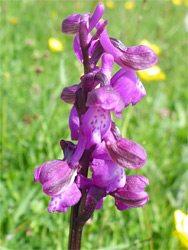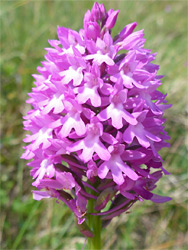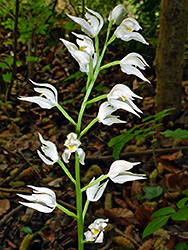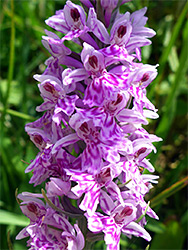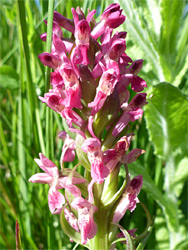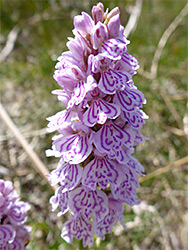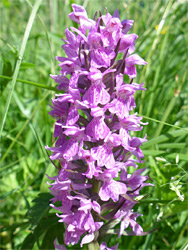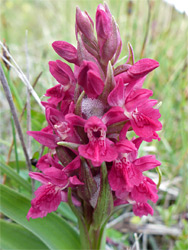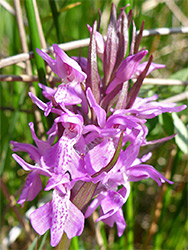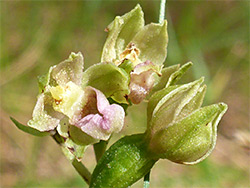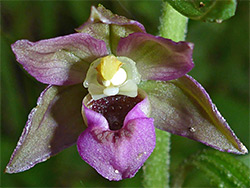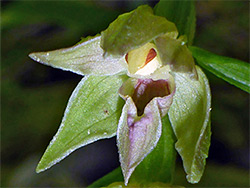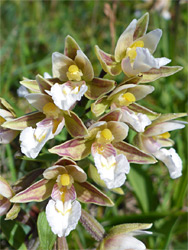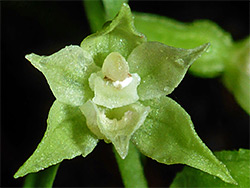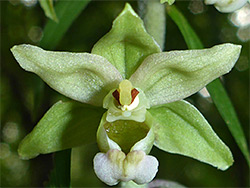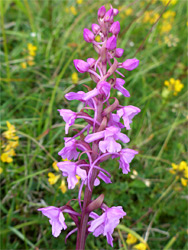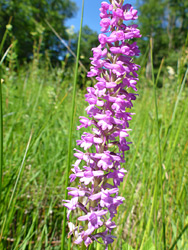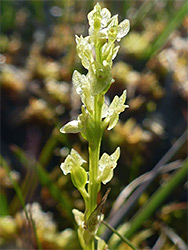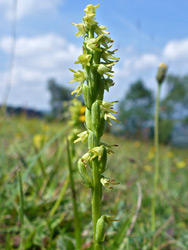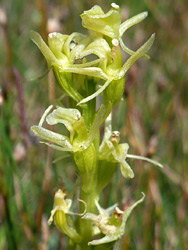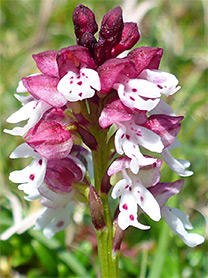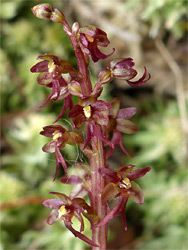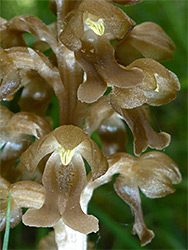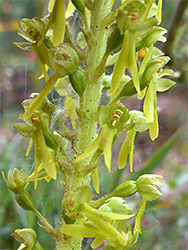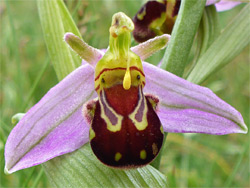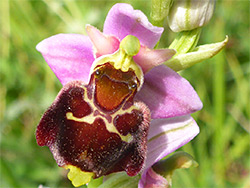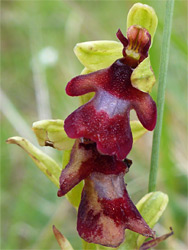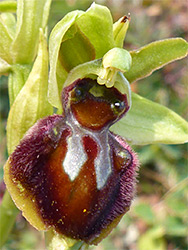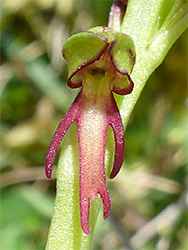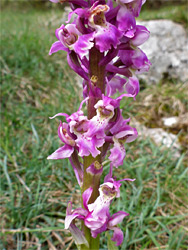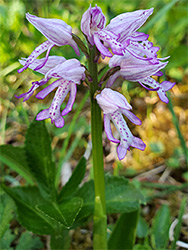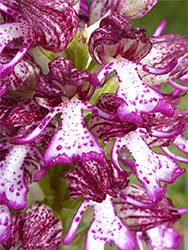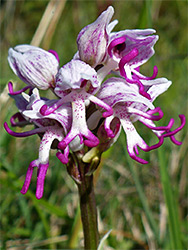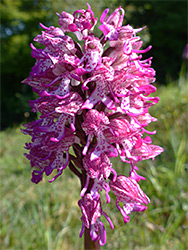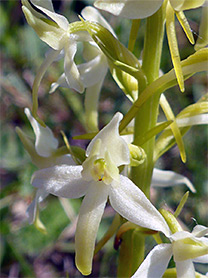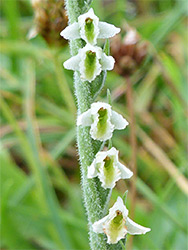Orchidaceae (orchid) is the second largest plant family in the world, with around 28,000 species, second in number only to the asteraceae; it also perhaps the most beautiful and intriguing, owing to the wide range of shapes and colours of its flowers. There are 56 native species in the British Isles, many rare and localised.
Leaves, where present, are unlobed and untoothed, with parallel veins, while the flowers are formed of three sepals, generally similar in form, and three petals, two similar, usually positioned above, and one very different, usually below. This latter petal, the lip or labellum, varies greatly from species to species, and may be broad or narrow, pouched or flat, hairy or hairless, lobed or unlobed. At the centre of the flower is the column, a staminate/pistillate organ which consists of four components, either fused or free; the anther, pollinia (pollen grains), rostellum (projecing structure to prevent self-pollination) and stigma.
Leaves, where present, are unlobed and untoothed, with parallel veins, while the flowers are formed of three sepals, generally similar in form, and three petals, two similar, usually positioned above, and one very different, usually below. This latter petal, the lip or labellum, varies greatly from species to species, and may be broad or narrow, pouched or flat, hairy or hairless, lobed or unlobed. At the centre of the flower is the column, a staminate/pistillate organ which consists of four components, either fused or free; the anther, pollinia (pollen grains), rostellum (projecing structure to prevent self-pollination) and stigma.
